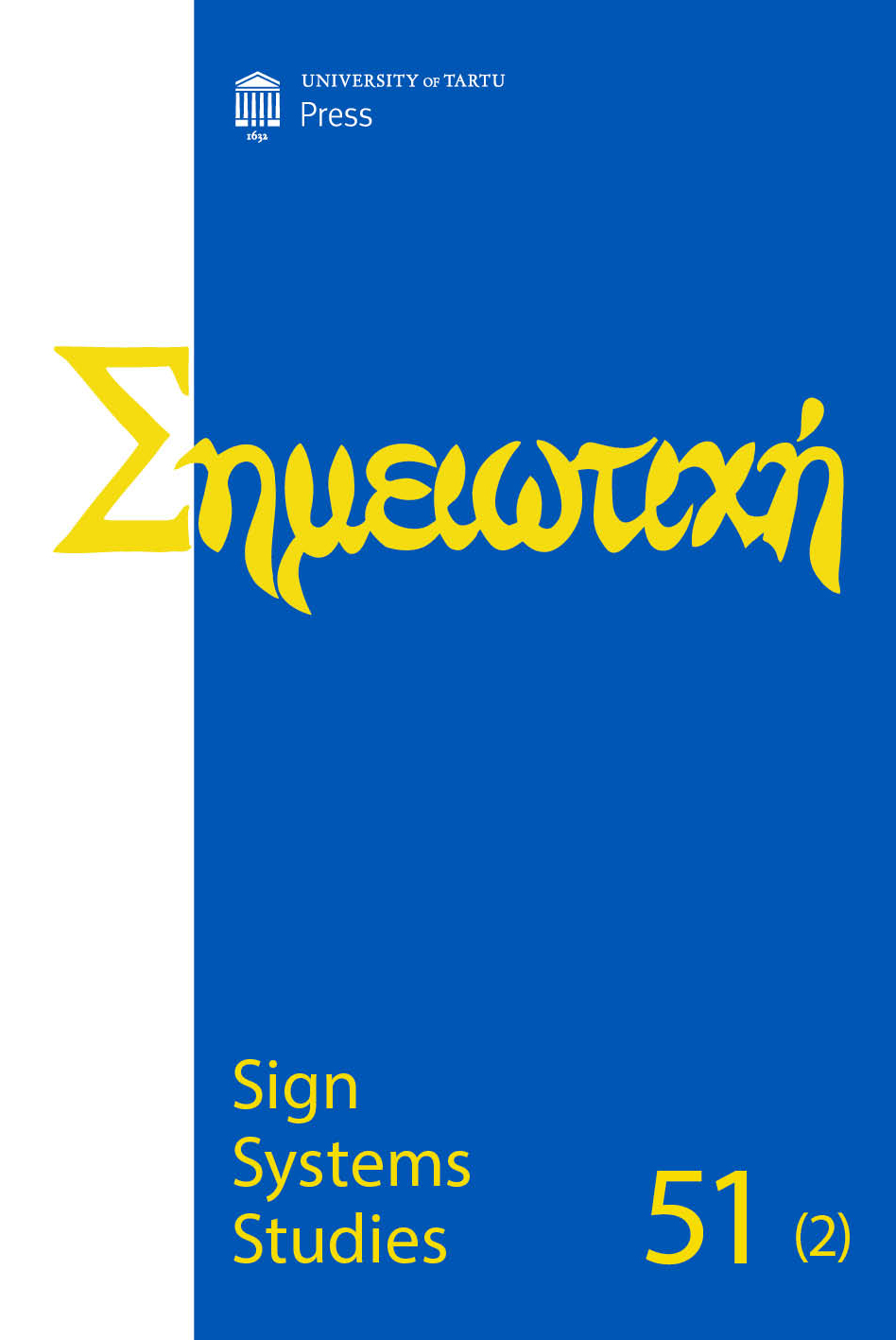Articles – NeMoSanctI on “Sign Systems Studies”
A special issue of Sign Systems Studies dedicated to “Religion in the semiosphere“, edited by Thomas-Andreas Põder, Matthew L. Kalkman, has just been published. The number – Vol. 51 No. 2 (2023) – hosts three contributions from members (or ex-members) Nemoesancti: our PI Jenny Ponzo, Francesco Galofaro and Magdalena Maria Kubas.
Download the complete issue here
Jenny Ponzo, Considerations about the ‘right to a biography’: Saints and intellectuals in contemporary culture
Taking its cue from Juri Lotman’s essay “Pravo na biografiyu”, this paper re-formulates the categories proposed by Lotman in relation to the two models of the saint and the modern intellectual, the former exemplifying the perfect realization of the norm and the latter the rejection of the norm in the name of an individual rule. These two models are considered with reference to two case studies from contemporary culture, respectively provided by the Catholic saints and by intellectuals – especially semioticians. The argument in the former case, which also takes into consideration other fundamental essays by Lotman, shows that contemporary Catholic culture challenges the identification of sanctity with the ideal of perfect adhesion to the norm. This notion is apparently applicable only to hagiographies seen as part of a mechanism of stabilization by which the dominating religious culture tames the explosive potential of the saintly figure. In the latter case, reflection on the theoretical and autobiographical production of several authors related to the field of semiotics shows that a third model can be added to the two identified by Lotman. This third model consists in acquiring the right to biography and carrying out autobiography not in contrast with the norm, as the modern writers studied by Lotman did, nor by dissolving oneself into the norm, but rather by dissolving oneself into the Other, that is, by opening one’s mind so as to allow the Other to become an integral part of oneself. This model is exemplified by the work by Julia Kristeva, in particular Teresa, My Love(2008), in that it overcomes the distinction between biography and autobiography and describes an intellectual and a saint who become “roommates”.
Francesco Galofaro, Beneath Thy Protection: Portrait of the Holy Virgin as a semantic operator
Starting from the third century, many songs, prayers, and icons testify to the way the Virgin Mary – Mother of God – has been attributed the role of protecting the community. Examples include the Akhathist hymn traditionally dated to the siege of Constantinople (626), the Polish anthem “Bogurodzica”, associated with the battle of Grunwald (1410), the icon of Częstochowa that protected Poland from the Swedish invasion (1655), and numerous others. The role of menace is embodied by different enemies: infidels, heretics, or atheists. The Virgin watches over the frontier between two cultural spaces: the inside and the outside of the semiosphere. A case study will provide insight into the function played by the Madonna at the border: the Madonna of the Rocciamelone, the highest sanctuary in Europe, founded by the crusader knight Rotharius (1358). A bronze statue of the Virgin was placed in the sanctuary in 1899. A small corpus of pastoral letters written by blessed Edoardo Rosaz, bishop of Susa (Piedmont), expresses the hope that the Virgin will protect Catholics from liberal heresy. Plastic oppositions such as top/bottom, resulting from the relationship between the Virgin and the landscape, are used to manifest abstract oppositions such as reason/passion, order/disorder, and Church/revolution. This homologation helps us understand how the Virgin, placed in upper space, embodies knowledge and cognition: she becomes a lookout, allowing a transfer of values from the semantic field of war to the religious one. The Virgin guards the border of the semiosphere, the border dividing the self from the other. Her function is the semiotization of incoming materials, transforming external non-communication into information and meaning. This article thus considers the Virgin as a semantic operator inverting the values of liberal discourse into information stored in Catholic cultural space. A mathematical model of the function played by the Virgin will be presented in the terms of quantum computing.
Magdalena Maria Kubas, The spatial representation of the Blessed Mary in Italian poetry at the time of the Second Vatican Council
The representation of the Holy Virgin has long constituted one of the most important thematic lines in Italian poetry, both sacred and profane. In terms of the representation of space, the Blessed Mary was traditionally placed in faraway, celestial hierarchies. In more recent periods, this figure is often placed in the space of earthly life, with which the lyrical subject (the enunciator) is more familiar. Juri Lotman’s perspective on the space of the typological description of culture shows that divinities belong mainly to the exterior (E) space of culture. Building on these considerations, the purpose of this article is to analyse recent Marian representations – both poetic and theological – in Italian culture. I will demonstrate that, during the 20th century in Italy, Marian sacrum was moved closer to or even inside interior space (I), as the Blessed Virgin started to appear mostly in scenes of daily life and her divine traits gradually lost importance. This kind of spatiality is also found in the ecumenical dialogue. The Second Vatican Council normalized both Marian theology and the faithful’s practices, which influenced textual production and brought about further changes in the spatial placement of Mary. While the general social trend towards secularization has been increasing the distance between the human and the divine, Mary’s sanctity was transferred to the interior space (I) of everyday life – and this could be one of the factors that relaunched Marian poetry.
The representation of the Holy Virgin has long constituted one of the most important thematic lines in Italian poetry, both sacred and profane. In terms of the representation of space, the Blessed Mary was traditionally placed in faraway, celestial hierarchies. In more recent periods, this figure is often placed in the space of earthly life, with which the lyrical subject (the enunciator) is more familiar. Juri Lotman’s perspective on the space of the typological description of culture shows that divinities belong mainly to the exterior (E) space of culture. Building on these considerations, the purpose of this article is to analyse recent Marian representations – both poetic and theological – in Italian culture. I will demonstrate that, during the 20th century in Italy, Marian sacrum was moved closer to or even inside interior space (I), as the Blessed Virgin started to appear mostly in scenes of daily life and her divine traits gradually lost importance. This kind of spatiality is also found in the ecumenical dialogue. The Second Vatican Council normalized both Marian theology and the faithful’s practices, which influenced textual production and brought about further changes in the spatial placement of Mary. While the general social trend towards secularization has been increasing the distance between the human and the divine, Mary’s sanctity was transferred to the interior space (I) of everyday life – and this could be one of the factors that relaunched Marian poetry.


